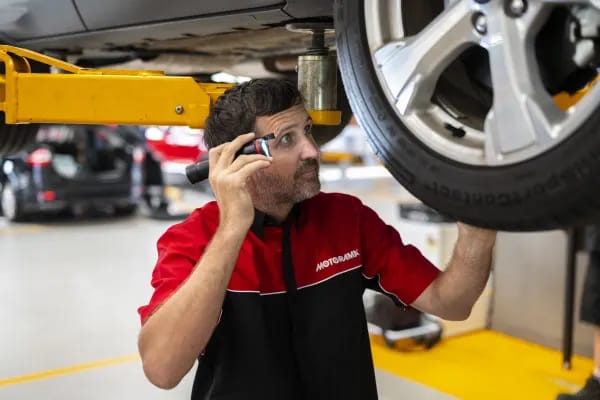
5 Fluids in Your Car You Need to Keep Your Eye On
Posted in Servicing Insights
5 Fluids in Your Car You Need to Keep Your Eye On
Whether you're sitting at a work desk for most of the day or running around getting constant exercise, it's important to keep your body well hydrated to keep it functioning at its best.
The very same principle applies to your four-wheeled friend in the garage. All cars have a very important set of fluids that cater for various parts of the vehicle to make sure it runs as smoothly as possible.

Luckily, checking fluid levels is one of those maintenance tasks you don't have to enlist the services of a professional mechanic for. Maintaining a car's fluids is something anyone can do from the convenience of their own garage, with products that can be easily purchased at any good car service centre. So pull your car outside on a nice sunny day, pop up that hood and make sure these five essential fluids are at the level they should be.
ENGINE OIL
The engine oil is perhaps the single most important liquid in your car, but it's also one of the easiest to maintain. Without a healthy supply of clean oil to lubricate the engine and prevent it from overheating, it won't be long before your car fails on you and incurs some hefty repair fees!
Most people are aware of the process of checking engine oil as it's so straightforward. Let your car cool down for a bit before opening the hood so you get an accurate measurement, and pull the dipstick out of the reservoir. Wipe it clean on a cloth, then reinsert it and pull it back out to get the reading. It should lie somewhere between the clear markings on the dipstick.
It's also important to check the colour and consistency of the oil too, and make sure it is a clear, golden colour instead of a dark, thick sludge.
BRAKE FLUID
You'd obviously want your brakes working in top condition to ensure the safety of you and your passengers! Brakes work by forming pressure in the brake fluid compartment, which is used to physically stop the car. It is a sealed system within the car, which means that it doesn't actually use up the fluid and therefore you should not be seeing any fall in the level.
If your car's brake fluids are dropping, it might be a sign that there is a leak somewhere in the reservoir, and it'd be a good idea to get it checked out.
TRANSMISSION FLUID
The all-important transmission fluid in your car performs a similar role to the engine oil, making sure everything is lubricated, cool and operating without any hitches. It is also measured in much the same way as the engine oil.
You'll find a corresponding dipstick for the transmission fluid, which you simply pop out to read the level. The only difference is that you should check the measurement while the engine is warmed up and running, and clean transmission fluid is usually red in colour.
COOLANT
Your car's coolant is usually a mixture of plain water and a special cooling fluid, and is essential as it helps to prevent your engine from overheating. Only check the coolant when the engine is nice and cool, otherwise you could get a nasty burn from the hot water inside the coolant chamber!
Check your car's manual to find out exactly what sort of mixture is required in the coolant - antifreeze is usually used to top up the reservoir to its required level.
WINDSCREEN WIPER FLUID
Keeping your windscreen clean is crucial to safe driving! Whilst water might seem to be an obvious choice at first, a simple window cleaning fluid will work with most cars. There are even some specialist products at your local car service centre.
These products prevent streaks and glare when the liquid dries. It can be quite hard driving into the sun with streaks making seeing the road even harder!



